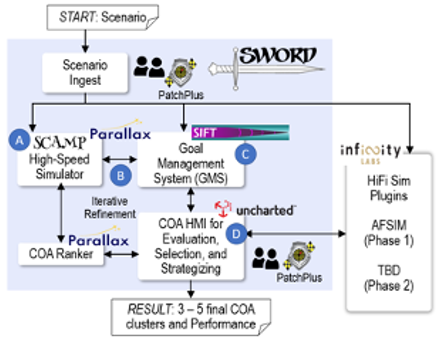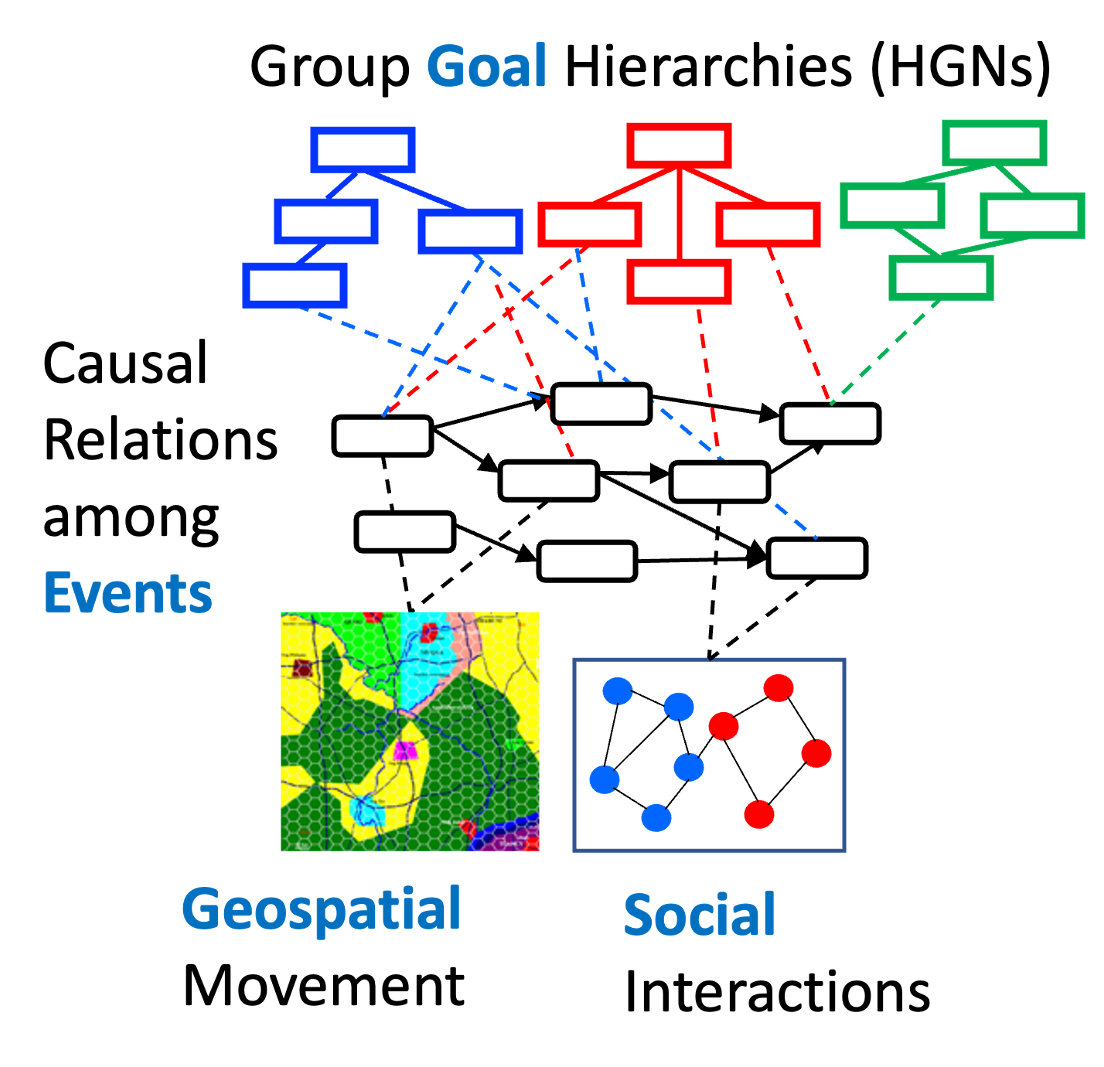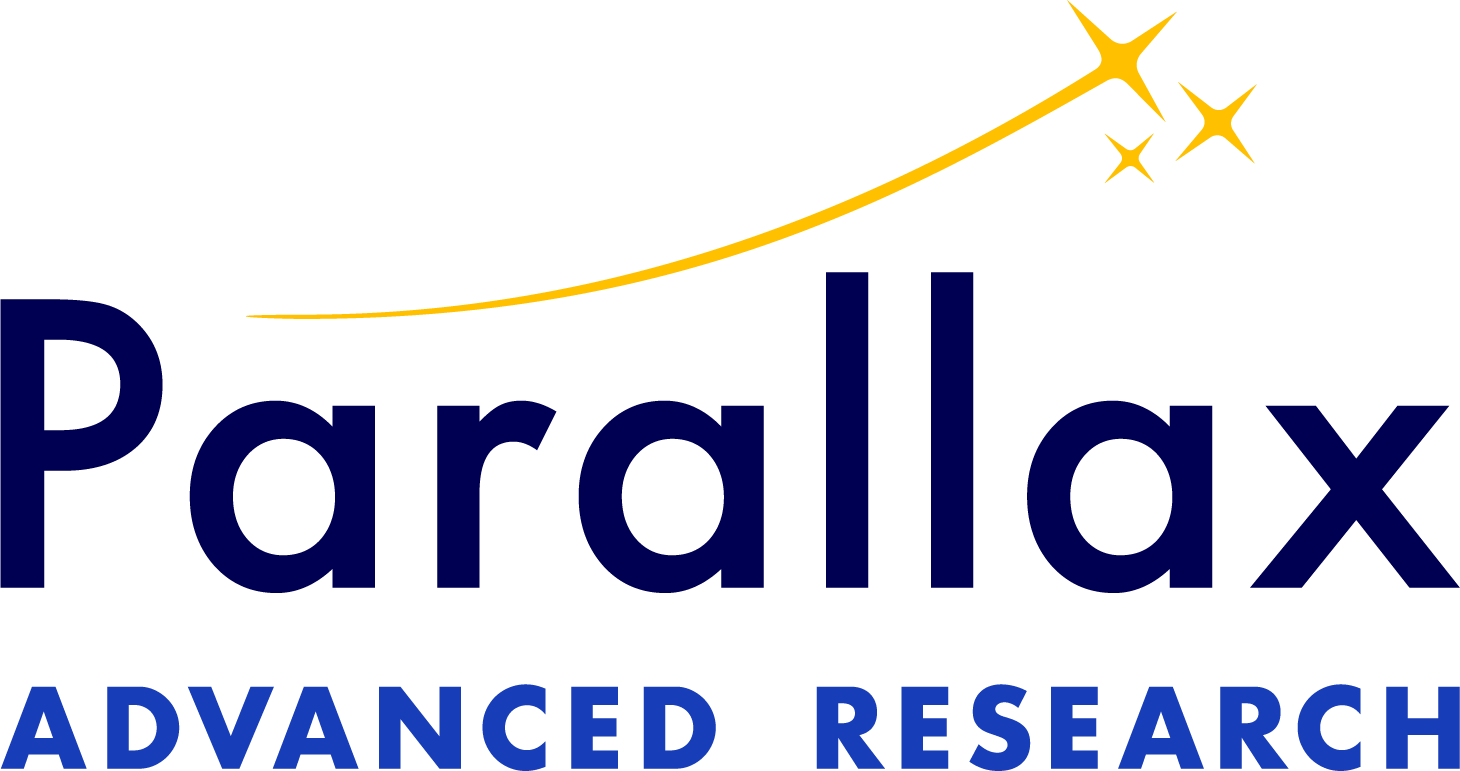
Our complex modeling capability involves:
Physics-Based Simulation
A variety of computational techniques are available to model the physical behavior of a system. These include finite-element analysis of mechanical stress, fluid dynamics, kinematic behavior, and underlying techniques of numerical integration.
System Dynamics
Systems of coupled differential equations are a computationally fast way to estimate the evolution of variables that describe the overall condition of a social system and can be used to fit the parameters of other simulation technologies against observed data. During the COVID-19 outbreak, such models (such as the Susceptible-Exposed-Infected-Recovering or SEIR compartmental model) gave a rapid picture of disease evolution.
Microsimulation
Microsimulation applies a numerical model like that used in system dynamics to individual agents, thus capturing the impact of individual differences among agents. Parallax’s Opera platform was used to model COVID transmission across Ohio’s 11 million residents, considering both individual differences and their varying locations with different levels of exposure.
BDI Agents
Parallax engineers construct agents using advanced methods of artificial intelligence to capture their beliefs, desires, and intentions (BDI), seeking to directly model the cognitive processes that people use in making decisions. Parallax is greatly extending the power of this approach with cognitive process networks, a novel scientific representation of the conscious mind that pays attention to memory, ongoing processes, and conscious and unconscious attention.
Swarm Intelligence
SCAMP is a sophisticated application of a biologically inspired method of agent interaction called stigmergy, inspired by mechanisms used by swarms of social insects such as ants and termites. SCAMP’s unique approach provides three important benefits:
Model construction and modification do not require a software engineer but can be done directly by the end user, greatly accelerating model development and refinement and reducing errors.
SCAMP already supports four causal perspectives (interacting events, agent interaction in geospace, strategic goals, and social influences) and can readily be extended to others.
SCAMP evaluates multiple possible outcomes in a single run. This platform has been used to generate realistic data about a social conflict such as Syria and is currently being applied to warfighting scenarios.
Hybrid Simulation
Hybrid simulation systems combine multiple technologies. For modeling COVID-19, we utilized a system dynamics model to derive operating constants for the Opera microsimulation. Presently, we are combining intelligent planning from our BDI toolkit with the SCAMP modeling system. This integration of social and physical modeling enables an accurate estimation of the timing and impact of physical effects on human interactions.

Parallax’s unique capabilities in modeling and simulation can be applied to a wide range of problem areas.
Physics-based modeling supports a variety of engineering problems, including:
Structural loading and stresses in mobile platforms
Damage mechanics and deformation/life modeling
Thermo-mechanical modeling of high-temperature structures
Flight trajectory modeling and analysis
Dynamics of fluid flow and plasma behavior of high-speed systems
Aerodynamics (subsonic, supersonic, and hypersonic)
Aircraft icing
Social and psychological modeling can address domains including:
Computational social science
Epidemiological analysis for policy guidance
Rapid planning tools to support war gaming and combat management
Analysis of complex scenarios with multiple DIMES/PMESII components
Training tools for non-kinetic environments with heavy emphasis on OOTW and hearts-and-minds objectives
Technical Lead

VP of Advanced Technology
